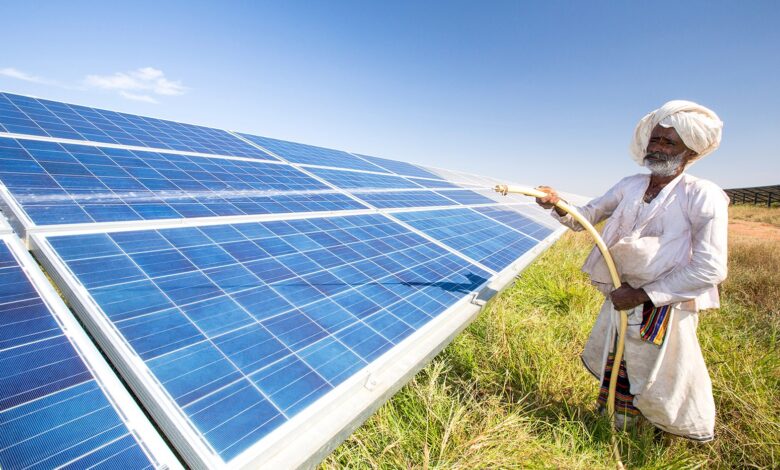Solar saved India over 4 billion dollars in energy costs; think-thank report
According to a report by energy think tank Ember, the Centre for Research on Energy and Clean Air, and the Institute for Energy Economics and Financial Analysis, India saved about 4.2 billion in fuel costs through the widescale use of solar power.

India has been steadily upping its green energy infrastructure to reduce reliance on fossil fuels which are not only impacted by the geopolitical environment hence being detrimental to energy security but are also a great contributor to the carbon footprint of the country.
India receives 300 sunny days on average and 12.5% of its landmass is suitable to produce solar energy according to the India energy portal. Solar energy has been one of the focus sectors of the government with the installed total solar capacity seeing an 18X increase from 2014 and estimated to grow at 35% CAGR till 2026.
India has many marquee solar projects like the world’s first solar-powered airport in Kochi, the world’s largest floating solar power plant being built in Omkareshwar Dam, Madhya Pradesh, one of the world’s largest solar plants in Bhadla Rajasthan, etc. with ambitious target of generating 100GW of solar power by the end of this year.
The efficient implementation of this green energy policy is now bearing financial fruits too as according to a report published by think-thank Ember, the Centre for Research on Energy and Clean Air about $4.2 billion in fuel costs were saved through solar generation in the first half of 2022. The solar infrastructure compensated for about 9.4 million tonnes (mt) of coal which would have further stressed an already strained domestic supply.
The report also analyzed the growth of solar and found that five of the top 10 economies with solar capacity are now within Asia, including China, Japan, India, South Korea, and Vietnam. The contribution of solar generation in seven key Asian countries – China, India, Japan, South Korea, Vietnam, the Philippines, and Thailand – avoided potential fossil fuel costs of approximately $34 billion from January to June 2022.
CREA’s Southeast Asia Analyst Isabella Suarez said, “Asian countries need to tap into their massive solar potential to rapidly transition away from costly and highly-polluting fossil fuels. The potential savings from existing solar alone are enormous, and expediting their deployment alongside other clean energy sources such as wind, will be crucial for energy security in the region. While ambitious targets are important, follow-through will be the key thing to watch moving forward.
Aditya Lolla, the Senior Electricity Policy Analyst at EMBER, said India’s solar power push in recent years has not only improved its energy security but also positioned its power sector well to embark on a solar revolution.
“India seems to be very bullish on solar power growth in the next 10 years too, as evident from the new draft National Electricity Plan. So, it’s looking very likely that the 2020s is when solar power is going to finally ramp up in India and begin India’s coal phasedown journey,” he said.



